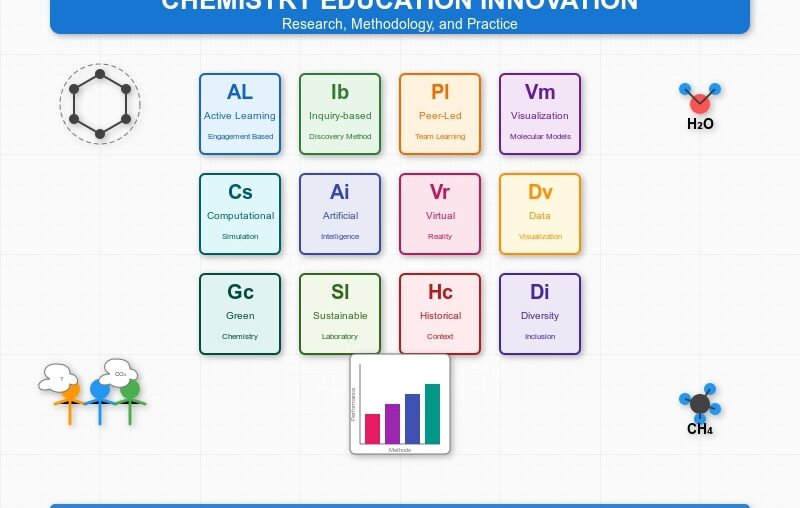Diversity and inclusion have become central discussions in higher education, particularly within STEM fields. Chemistry departments across the United States are striving to create more inclusive environments, yet challenges remain. Addressing these issues is essential for fostering innovation, supporting underrepresented groups, and ensuring equitable access to opportunities in the field.
The Current Landscape of Diversity in Chemistry
Despite efforts to increase representation, chemistry departments in the U.S. still struggle with diversity. According to the National Science Foundation (NSF), racial and ethnic minorities, women, and individuals with disabilities remain underrepresented in chemistry-related careers. While progress has been made, systemic barriers continue to hinder equal participation.
Gender disparities are particularly evident. Although women earn nearly half of undergraduate chemistry degrees, they are less represented in advanced positions such as full professors and industry leaders. Similarly, Black, Hispanic, and Native American individuals make up a smaller percentage of chemistry faculty compared to their population in the U.S.
Challenges Faced by Underrepresented Groups
1. Lack of Representation and Role Models
Seeing individuals from diverse backgrounds in leadership roles can inspire students and early-career chemists. However, the shortage of minority faculty members in chemistry departments means fewer role models for aspiring scientists from underrepresented groups.
2. Implicit Bias and Microaggressions
Students and faculty often face subtle, yet harmful, biases that can impact their experiences in academic settings. Microaggressions—such as assumptions about one’s capabilities based on race or gender—can discourage participation and contribute to feelings of isolation.
3. Limited Access to Resources and Funding
Many students from underrepresented backgrounds face financial barriers that make pursuing a chemistry degree more challenging. Access to scholarships, grants, and research opportunities can significantly impact a student’s ability to succeed in the field.
4. Exclusion from Research Networks
Networking is crucial in academia and industry. Unfortunately, individuals from underrepresented backgrounds often lack the same access to influential chemistry homework mentors, professional connections, and research collaborations as their peers.
Efforts to Improve Diversity and Inclusion
1. Strengthening Recruitment and Retention Strategies
Universities are implementing targeted recruitment programs to attract a more diverse student body. Schools such as the University of California, Berkeley and Howard University have developed initiatives to support minority students pursuing chemistry degrees.
Retention is just as important as recruitment. Many institutions have introduced mentorship programs, affinity groups, and support services to ensure that students from diverse backgrounds feel welcomed and supported throughout their academic journey.
2. Addressing Bias Through Training and Policy Changes
Many chemistry departments now require diversity training for faculty and staff. These programs help individuals recognize and address implicit biases that may influence hiring decisions, grading, or daily interactions.
Additionally, universities are revising tenure and promotion policies to ensure that faculty members from underrepresented backgrounds receive fair evaluations and opportunities for advancement.
3. Expanding Access to Financial Support
To address economic barriers, several organizations and universities have increased funding opportunities for underrepresented students. The American Chemical Society (ACS) offers scholarships and research grants to support minority students in chemistry. Additionally, some universities have created tuition assistance programs to alleviate financial burdens.
4. Building Inclusive Research Networks
Many academic institutions and professional organizations have launched initiatives to promote networking opportunities for diverse scientists. Programs such as the NOBCChE (National Organization for the Professional Advancement of Black Chemists and Chemical Engineers) and the Society for Advancement of Chicanos/Hispanics and Native Americans in Science (SACNAS) provide platforms for mentorship, collaboration, and career advancement.
The Role of Chemistry Departments in Driving Change
1. Fostering Inclusive Classroom Environments
Professors and instructors play a critical role in setting the tone for inclusivity. By incorporating diverse perspectives into curricula and using inclusive teaching methods, faculty can create a more supportive learning environment for all students.
2. Encouraging Community Engagement
Partnerships with local schools, businesses, and community organizations can help expose students from diverse backgrounds to chemistry at an early age. Outreach programs, such as science fairs and summer research initiatives, can spark interest in chemistry and pave the way for future careers.
3. Recognizing and Celebrating Diversity
Departments should actively highlight the achievements of diverse chemists—both past and present. Acknowledging contributions from scientists of various backgrounds can help inspire students and reinforce the idea that chemistry is a field for everyone.
Moving Forward: A More Inclusive Future for Chemistry
Achieving true diversity and inclusion in chemistry requires ongoing effort, institutional commitment, and cultural shifts within academic and professional settings. While progress has been made, there is still work to be done to ensure that all individuals—regardless of race, gender, or background—have equal opportunities to thrive in the field.
As universities and professional organizations continue to prioritize diversity initiatives, the future of chemistry will be shaped by a broader range of perspectives, leading to richer scientific discoveries and a more equitable academic environment.
Author Bio:
Emily studied English literature and lives in NYC. She is passionate about education and social issues, often writing about diversity and inclusion in academic settings.
Also Read: Creating Publication-Ready Tables and Figures with SPSS



